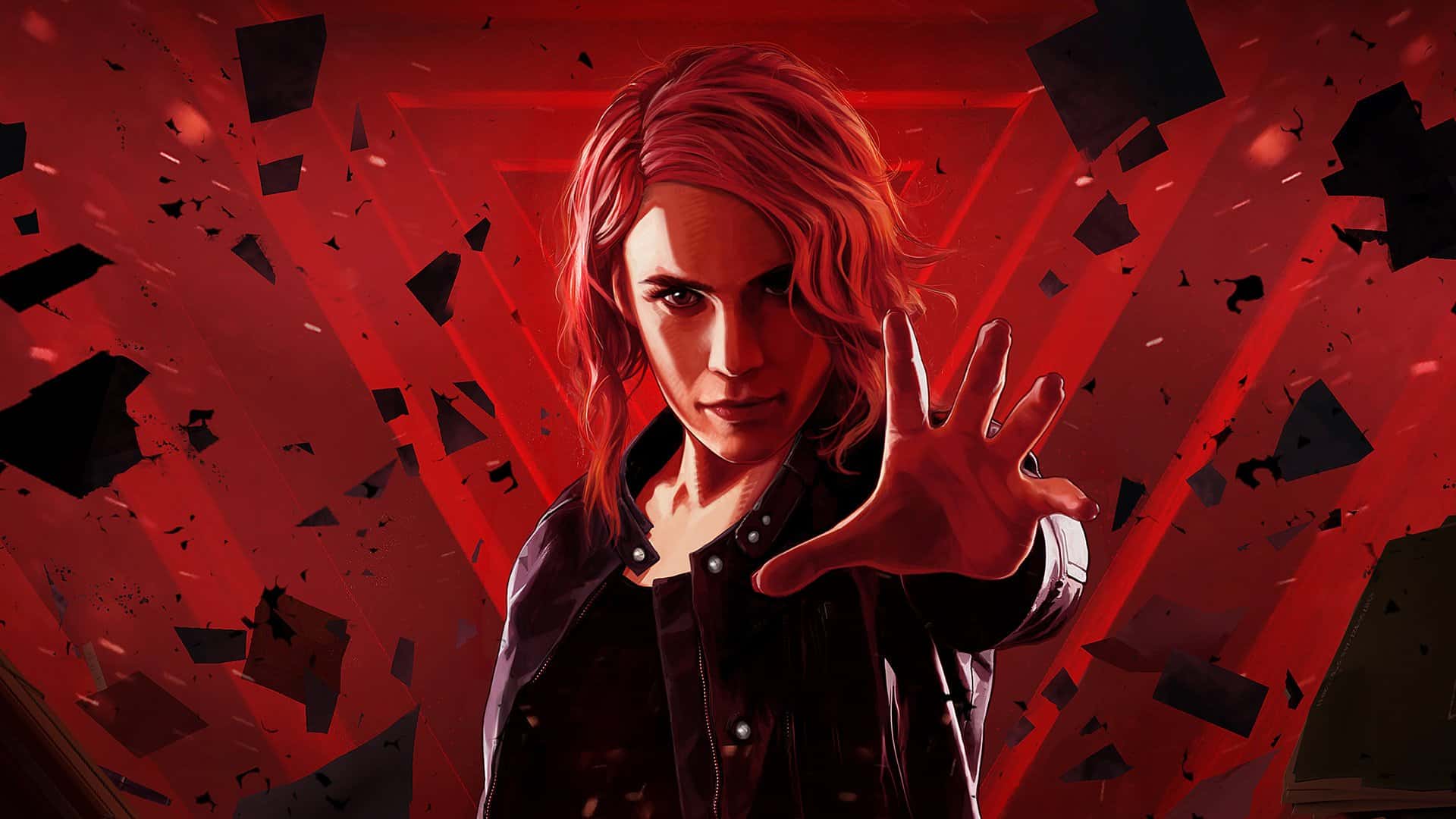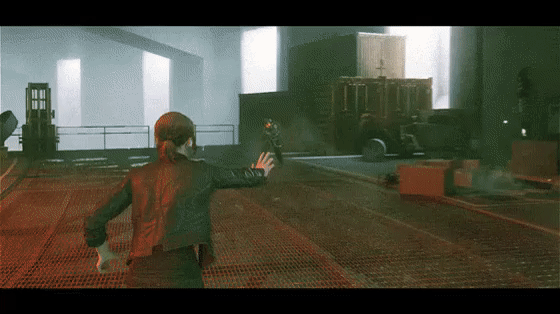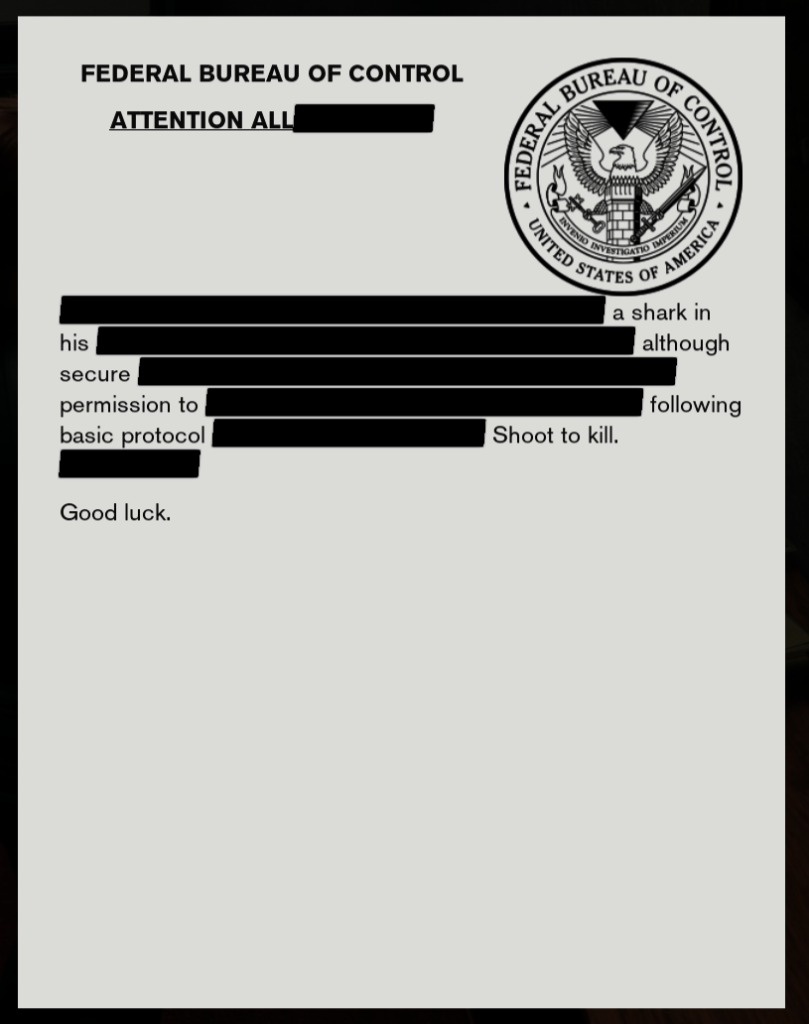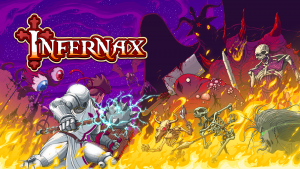
When I first saw Control’s reveal at Sony’s E3 2018 conference, I was instantly entranced by what I saw. A world inspired by one of my favorite genres, surreal horror? Reality-bending, fluid combat? Absolutely inspired environments, rendered in phenomenal detail? I watched the reveal trailer well over twenty times the following day. I knew that Remedy Entertainment made popular games, but as someone who had only ever played a few of their titles, I wasn’t entirely sure what to expect from the Finnish developer. Turns out, if I had decided to expect the world from them, Remedy would have surpassed even that.
After my 22-hour romp through Control, a bittersweet feeling came over me; my new favorite game, like all good things, had come to an end. I could not get enough of the story Remedy created; the personal, grounding story of Jesse Faden and her search for her brother. The gameplay was incredibly satisfying, with combat making you feel like a superhero in all but name. Yet, of all the well-executed aspects of this game, nothing impressed me more than the world-building; the attention to detail is stunning, and the lore expands on the sometimes horrific, sometimes wacky daily life at the Federal Bureau of Control in so many different ways. My first priority when exploring a new area was finding collectibles to learn more about this strange setting and the unique internal logic it operated on. To put it short, I was immersed in Control, and even after finishing it, I feel the need to immerse myself again.
For those not in the know, Control revolves around the titular Federal Bureau of Control, a clandestine US Government agency tasked with investigating, containing, and researching the supernatural. You play as Jesse Faden (played by Courtney Hope), a woman who, as a child, was in the midst of a Bureau cover-up after a paranormal event occurred in her hometown of Ordinary. As part of their operations, the FBC took her brother Dylan away to learn more from him about the events that occurred in Ordinary; Jesse managed to escape. Seventeen years later, Jesse finally tracks down the secretive Bureau to their headquarters in New York City, known as the Oldest House — a massive, Brutalist skyscraper in the middle of Manhattan. The House dwarfs the Empire State Building and the Freedom Tower, but it is only visible in the skyline to certain individuals that the Oldest House has deemed worthy of perceiving its presence. For the majority of the population, the House does not exist. Jesse being able to see and enter the House is the first indication that there is more to her than meets the eye.

It soon becomes clear that something is very amiss at the FBC. There is not a single soul in the reception area, the lights are off in the hallways, and papers are strewn across the floor. The one person Jesse meets is Ahti, a janitor mopping up the floors in the dark who is fond of speaking in riddles and Finnish metaphors. He helps Jesse find her way to the elevator to meet with a representative on the Executive level, and it becomes clear soon after that something is seriously wrong with the House she finds herself in. The broken elevator she passed by earlier is now in a completely different location, and is now operational. Turning around, she notices the entire floor she was just on had been rearranged over the past few moments. Nothing was where it was when she entered.
Its little details like this that cause Control to truly shine. Bizarre noises, recurring ideas and words, and the non-Euclidean geometry of the Oldest House lend themselves very well to immersing players in the world, now eager to solve the surreal mysteries that lay before them. As Jesse comes to terms with the weirdness around her, she hears a gunshot from a nearby room. Investigating the noise, she finds the current Director of the Bureau, Zachariah Trench, dead on the floor due to a self-inflicted gunshot wound. She picks up the gun and realizes its no ordinary weapon, its the “Service Weapon,” a physics-defying firearm that can morph into various different forms as controlled by its wielder. Moments later, she is attacked by possessed agents of the FBC and fights them off with her newfound weapon.
She eventually rescues surviving Bureau researcher Emily Pope, who explains that the possessed men she encountered were under the control of the Hiss, an otherworldly lifeform that operates through resonance, using sound to infect unprotected hosts and add them to their hivemind. It’s at this point that Jesse is hit with her first big revelation; since she picked up the Service Weapon and did not die, she is now the new Director of the Federal Bureau of Control. Clearly promotions work a bit differently at the FBC then they do in real life!
Jesse is now tasked with solving the mystery of the Hiss; how they got into the Bureau, and how they can be stopped. To that end, Jesse has many tools at her disposal, the aforementioned form-changing Service Weapon, as well as abilities obtained from “Objects of Power.” Objects of Power are mundane objects imbued with supernatural energies; Jesse can bind these objects and put their powers to her personal use. One mission involves ritually binding a floppy disk that launches objects around it at high velocities; succeeding at this allows Jesse to telekinetically launch objects at enemies. Another is a 1950’s era television that floats throughout the Oldest House, Jesse can catch up to it and absorb its power to levitate through the air. These objects are spread out at reasonable points throughout the story and world map, so Jesse follows a typical progression where she slowly learns more and more powerful abilities until she is a reality-warping powerhouse.
These powers are used to great effect in the games phenomenal combat. Particle and debris heavy-fights lend itself to bombastic, cinematic experiences in even the simplest of skirmishes between Jesse and the Hiss. The ability to utilize both the Service Weapon and Jesse’s powers gives a great amount of freedom in regards to how players want to approach combat; I personally tended towards an opening salvo of telekinetically launched objects at foes, and following up with gunplay while my “mana” recharged.
One thing I particularly liked about the combat is how surprisingly difficult it could be. Its all about forward momentum; the game is not a cover-shooter, and your best bet is to overwhelm your enemies on offense and dig in for the next wave of Hiss with your defensive capabilities. Wait for another opening and then go crazy with your powers, not stopping until they are all dead or you need to retreat. But retreating often isn’t ideal. The only way to regain health is to defeat enemies and pick of the blue clusters they drop, which refill your health bar. In essence, if you aren’t staying near the enemies you are killing and/or perpetually moving forward towards to next set of enemies, you will find it difficult to regain the upper-hand. There is only a single, static difficulty, which might turn-off more casual players who were hoping to switch to an easier setting if the going gets to tough. The game can indeed be quite difficult if you cannot maintain momentum; and the wide variety of personal and gun modifications you find can only alleviate this difficulty, not solve it. In my opinion its a refreshingly challenging experience that takes a bit of practice to master; but once you do, you’ll feel like Neo in the Matrix, dodging bullets and launching tables and chairs at enemies from high above.
Speaking of tables and chairs, did I mention that almost every aspect of the environment can be interacted with? Countless objects can be picked up by Jesse and telekinetically thrown at the Hiss. Grenades detonating in offices result in spectacular explosions that send papers, typewriters, and chunks of desks every which way. The destruction effects in the environment are exceptional — however, though I personally played on my high-end PC, I have heard reports from console users that the particle and effects-heavy fights can lead to some serious slowdown on older consoles, such as the original PS4 and Xbox One. While I will not be factoring that into my personal verdict, I feel it is important to note so readers planning to play it on a console can adjust their plans accordingly, if they so choose.
In addition to the spectacular-looking fights, the game’s graphics and art direction are second-to-none. The brutalist architecture of the Oldest House, with its hard lines and drab colors, stands in stark contrast to the otherworldy forces you routinely encounter there. I’d go so far to say that the Oldest House itself is a character; the unwelcoming, possibly sentient concrete monstrosity certainly has a way of unsettling the player even when the Hiss are not present. All of this is rendered in gorgeous detail by the graphical team at Remedy, who have truly outdone themselves. The game itself looks realistic, with lighting and dynamic shadows, as well as high-quality textures that give the environments and characters a phenomenal level of detail; detail that is taken up to eleven if used in conjunction with NVIDIA’s RTX technology. This, coupled with the fluid, expertly-crafted combat animations, allows the world to feel believable and immersive.

Well, believable in a certain sense. Control certainly looks realistic, that much is a given. However, the world itself is certainly not believable, which is the point. The FBC’s entire mission is to contain paranormal objects and entities that do not abide by natural law. It goes without saying that Jesse’s forays deeper into the Oldest House are going to get pretty strange. At one point, I had to chase down a murderous fiberglass merry-go-round horse that had escaped containment, after which I absorbed its power and was able to dash across the Oldest House with great speed. Later, I found an almost completely redacted document detailing a shark that seemed to be loose in the House. The last sentence of the document? “Shoot to kill.”
All of this goes to show just how weird the everyday life inside the Oldest House is. When you’re dealing with the supernatural, not everything is going to horrific, grotesque body horror and monsters lurking in the shadows. Logically, items that don’t abide by the laws of nature and have various strange effects could be horrific, but they could also be mundane or even unintentionally humorous. I really appreciate Remedy being willing to embrace this weirdness, as it complements that light horror aspects in a very good way, and is believable when taking the game world’s own internal logic into account.
From a level design standpoint, said world is expertly crafted. The Metroidvinia-style map has multiple sectors to explore, each themed around a different role. The Executive Sector is home to the general administrative offices that keep the Bureau running, while the Research Sector is full of labs and projects run by the FBC’s scientists. Each area has a wealth of collectibles to find and exploring every nook and cranny to discover secretive documents was half the fun of the game for me.

The plot of the game is another strong point, and it will keep you guessing throughout your time playing. I don’t want to spoil too much, but Jesse’s search for her brother, and her slowly getting used to her position as Director, are both central aspects to the plot and they pay off in a satisfying way. This story is supplemented by a cast of likable supporting characters, who guide Jesse through the strange new world she’s in and provide much-needed exposition. These include in-game NPC Bureau employees, such as Research Assistant Emily Pope (Antonia Bernath) and Security Officer Simon Arish (Ronan Summers), who are always eager to answer any question Jesse may have.
In addition, live-action characters are also present. Late Director Zachariah Trench (played by James McCaffrey, who played the title character in Remedy’s Max Payne series) and Head of Research Dr. Casper Darling (played by Matthew Porretta, who played the title character in the Alan Wake series, also by Remedy) complement the in-game cast through various live-action recordings found in the world. This trademark Remedy practice of “Medium Blending” is alive and well in Control, and its put to good use; Casper Darling’s live-action recordings provide more detailed insights into the character than a 3D-rendered, motion captured version of him could. Jesse on the other hand is almost exclusively a digital character, and her personal feelings are instead presented through various asides and internal monologues during conversations and gameplay. Although difficult to portray a character’s thoughts in visual media, Remedy managed to pull it off here, giving players just enough insight into Jesse’s thought process that they have little trouble understanding her motivations, but also being curt and vague enough to keep players asking questions. All of this is done without seeming awkward or forced.
Sam Lake and his team at Remedy should be congratulated not just for building an amazing story, but also for creating a world filled with mystery and strange rules that keep players on the edge of their seat throughout. A complicated web of lore is present in various documents and conversations, and learning the weird terminology of the FBC is an adventure in itself. Altered Items are paranormal objects that violate natural law in various ways, such as a 1950’s refrigerator that will swallow you into a different dimension, or a mannequin that will duplicate nigh-endlessly if touched.
There also exist the aforementioned “Objects of Power” which are more powerful Altered Items that have a direct link to the Astral Plane and the entity that resides there. Known to the FBC as “The Board” it takes the form of an inverted black pyramid ever-present in the skies of the Astral Plane. Speaking in strangely pitched radio static, the Board entrusts Jesse with protecting the Oldest House, while routinely breaking the fourth wall to address the player directly.
Darling explains that these items, both Altered Items and Objects of Power, are influenced by the zeitgeist, the collective thoughts of all of humanity. A house that is believed to be haunted is haunted simply due to enough people believing it is. “Archetypal” objects are in essence an iconic or codifying manifestation of various concepts, such as a rubber duck, or a jukebox. These objects absorb the ideas of all of humanity and become Altered. Treading through the Panopticon, the FBC’s main warehouse, I encountered various containment chambers holding mundane, iconic objects, including a house fan, a crowbar, a television, and a pink flamingo. The ideas of Carl Jung are alive and well in the “science” of the FBC; the Jungian concepts of synchronicity and the collective unconscious are the main driving forces of the paranormal world. You ever had a bad dream about a creepy ventriloquist doll? Well, if you and enough other people dream the same thing, and spread the idea to others that the dolls are creepy, then you just might give one paranormal abilities. Sweet dreams!
These Altered Items, in turn, are often found or created at the sites of Altered World Events, paranormal happenings in the outside world that the Bureau is dispatched to contain and cover-up. Ordinary, Jesse’s hometown, experienced one such event through due to a haunted slide projector.
Delving deep into the lore like this is an incredible experience for those who are willing to make hunt down and follow the hints the game gives you. My favorite moment has to be learning about what happened all those years ago in Ordinary. Jumping down the rabbit hole, I hunted far and wide for the various classified documents to find out more about the Ordinary “Altered World Event.” Discovering the horrific, surreal, and frankly, bizarre details of the incident was one of the most memorable parts of the game to me.
Overall, Control is a remarkable experience, and for reasons that aren’t typical for most games. While the gameplay is exceptional, and the story gripping, by far the strongest aspect of the game is the world created for it. All the secrets, the little hints, the hidden documents; all of it made me want to find out more about this world. I never wanted it to end. Remedy has crafted a setting that has almost unlimited potential in terms of what kind of stories it can tell. And, while some might be unsatisfied with the ending (I personally am not), its open-ended nature leaves room for countless opportunities to continue telling the story of the FBC and the Oldest House. I cannot wait for the expansions, and I certainly cannot wait for the sequels!
I rate Control 10/10. In my book, it’s an absolute masterpiece.







